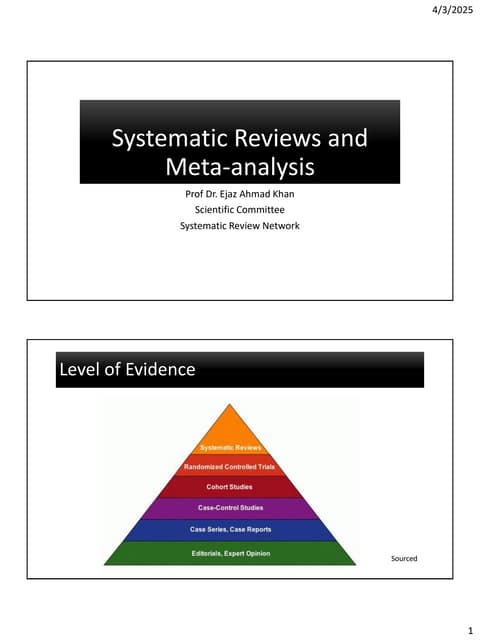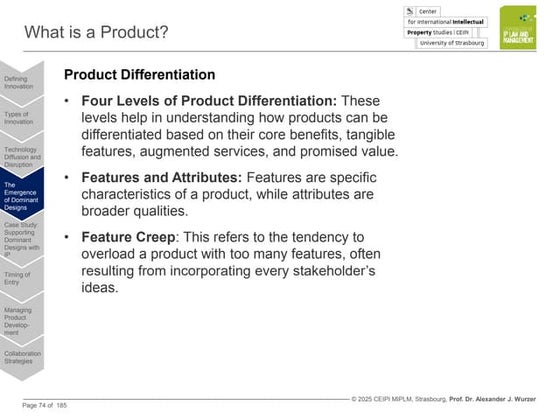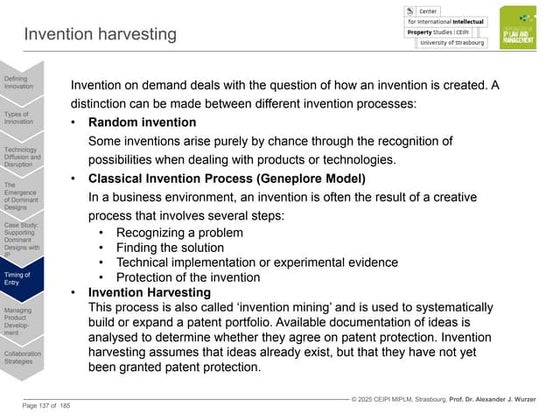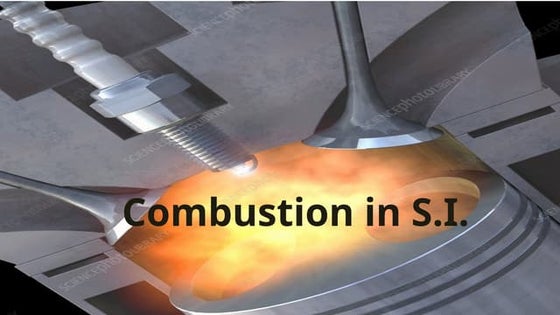1-ComputerBasics.ppt
- 2. 2 What is a computer? âĒ A computer is a electromechanical device which can be programmed to change (process) information from one form to another. â Do exactly as they are told. â Digital devices: Understand only two different states (OFF and ON)
- 3. 3 Traditional Types of Computers âĒ General purpose computers âMainframe âMinicomputer âMicrocomputer (Personal Computer)
- 4. 4 Traditional Types of Computers âĒ First computers, introduced in 1950s âĒ Used by large businesses âĒ Typically supported 100 to 500 users âĒ Very expensive âĒ Used for very large processing tasks âĒ Mainframe Computers
- 5. 5 Traditional Types of Computers âĒ Typically supported 10 to 100 users âĒ Smaller and less expensive than mainframes âĒ The real difference is relative in terms of price, power, marketing. âĒ Minicomputers
- 6. 6 Traditional Types of Computers âĒ Small, self-contained computers with their own CPUs âĒ Used by home and business users âĒ Uses a microprocessor, a CPU (Central Processing Unit) on a single chip. âĒ Microcomputers (Personal Computer or PC)
- 7. 7 Portable Computer âĒ Desktop computers âĒ Laptop computers âĒ Personal Digital Assistants (PDAs) âĒ What are these types of portable computers (a type of personal computer)?
- 8. 8 Networked computer âĒ Networked computer = Computers connected to other computers or peripheral devices (printers, etc.) to share information. âĒ What is the difference between these two networked devices? Intelligent terminal (computer) Dumb terminal âĒ No CPU (uses serverâs) âĒ No Operating system (uses serverâs) âĒ Input and Output only
- 9. 9 Embedded Computers âĒ Embedded computers â Computers found in consumer goods in order to enhance their function.
- 10. 10 Special Purpose Computers âĒ Special purpose or dedicated computers â A device with a specific purpose such as game system or information kiosk.
- 11. 11 Hardware versus Software âĒ Hardware = The physical components that make up a computer system. â More in a momentâĶ âĒ Much more on all of these items in later presentations!
- 12. 12 Hardware versus Software âĒ Software = The programs (instructions) that tell the computer what to do. â System Software â Application Software â Stored on a storage media such as hard disk, CD-ROM, floppy disk, tape, etc. â More laterâĶ
- 13. 13 Hardware Components âĒ This is just an overview, more laterâĶ
- 14. 14 Hardware Components SYSTEM UNIT INPUT OUTPUT PERMANENT STORAGE Know these!
- 15. 15 The Processor Letâs open the box!
- 16. 16 The Processor circuit board = a board with integrated circuits (microchips) âĒ system board or motherboard âĒ interface boards or expansion boards system board or motherboard = a single circuit board with the components which make up the computerâs processor for a microcomputer, including the: âĒ CPU (Central Processing Unit) âĒ Memory â RAM â ROM or ROM BIOS âĒ expansion slots
- 17. 17 The Processor: The CPU CPU (Central Processing Unit) = A complex collection of electronic circuits on one or more integrated circuits (chips) which: 1. executes the instructions in a software program 2. communicates with other parts of the computer system, especially RAM and input devices The CPU is the computer!
- 18. 18 Input and Output Devices SYSTEM UNIT INPUT OUTPUT PERMANENT STORAGE
- 19. 19 Input Devices âĒ Enter information into a computer âĒ Examples: â Mouse â Keyboard â Trackball â Touchpad â Light pen â Joystick â Digital camera â Microphone â Bar code reader â Scanner
- 20. 20 Output Devices âĒ Send information out from a PC âĒ Examples: â Speakers â Monitors âĒ Visual Display Unit (VDU), Cathode Ray Tube (CRT), Liquid Crystal Display (LCD), Light-Emitting Diode (LED) â Printers
- 21. 21 System Unit - Revisited SYSTEM UNIT INPUT OUTPUT PERMANENT STORAGE System Unit: âĒ CPU (Central Processing Unit) âĒ Memory â RAM â ROM or ROM BIOS âĒ expansion slots
- 22. 22 RAM (Random Access Memory) RAM (Random Access Memory) = integrated circuits (chips) used to temporarily store software (programs, instructions) and data âĒ âprimaryâ storage for the CPU âĒ electronic switches, storing ONâs and OFFâs Temporarily stores for the CPU: âĒ Software â operating system software â application software âĒ Data â data (documents, spreadsheets, etc.)
- 23. 23 Inserting RAM RAM is TEMPORARY memory RAM is volatile âĒ stores ON and OFF bits (software and data) electrically âĒ when power goes off, everything in RAM is lost
- 24. 24 RAM: Speed Why does the CPU use RAM? âĒ The CPU is very FAST! âĒ The CPU needs the instructions (software) and data as quickly as possible âĒ If the CPU has to wait, so does the user Why doesnât the CPU use permanent storage like disk drives? âĒ Too slow
- 25. 25 RAM: Capacity The amount of RAM determines: âĒ what software and data the user can work on âĒ how much software and data the user can work with âĒ Most computers have at least 256 MB (Megabytes, 256 million bytes) âout of memoryâ error message from the Operating System The more complex and sophisticated the software, the more instructions that software contains, which means larger software files.
- 26. 26 ROM (Read Only Memory) ROM (Read Only Memory) = integrated circuits (microchips) that are used to permanently store start-up (boot) instructions and other critical information Read Only = information which: âĒ Cannot be changed âĒ Cannot be removed âĒ Cannot be appended (added to) âĒ Fixed by manufacturer
- 27. 27 ROM (Read Only Memory) ROM is sometimes known as ROM BIOS (Basic Input Output System software) ROM permanently contains: âĒ start-up (boot) instructions âĒ instructions to do âlow levelâ processing of input and output devices, such as the communications with the keyboard and the monitor Firmware = software program which is stored permanently on a microchip, such as the software on the ROM chip
- 28. 28 Looking at your computer
- 29. 29 Storage Devices SYSTEM UNIT INPUT OUTPUT PERMANENT STORAGE âĒ Storage Devices: â Floppy disks â CD-ROMs â Hard disks â Zip disks â Tape drives
- 30. 30 Floppy disks âĒ Store up to 1.44 MB of data âĒ Usually 3.5" square disks âĒ Removable Write-Protect tab (Open means âwrite enabledâ)
- 31. 31 Hard disks âĒ Fixed permanently in a hard disk drive inside a system unit âĒ Used to store the operating system, applications, and data âĒ Can not buy more expansion (easily)
- 32. 32 CD-ROMs âĒ Read-only memory devices (but CD-R and CD-RW discs are recordable) âĒ Store up to 650 MB of data âĒ Portable and can be used on any computer that has a CD-ROM drive âĒ CD-R (CD Recordable) âĒ CD-RW (CD Rewritable)
- 33. 33 Flash sticks or memory âĒ Storage âĒ Digital Player âĒ Voice Recorder
- 34. 34 Zip disks âĒ Store up to 250 MB of data âĒ Used for backing up files or transporting large files
- 35. 35 Tape drives âĒ Work like a tape recorder âĒ Vary in capacity and access speed âĒ Relatively expensive âĒ Generally used to back up data âĒ Good for âarchivingâ information âĒ Types â Cartridge (slowest) â DAT (Digital Audio Tape)
- 36. 36 Computer Performance âĒ CPU speed (and type) âĒ Amount of RAM (and speed) âĒ Hard disk capacity
- 37. 37 Computer Performance âĒ CPU Speed â Governed by a clock â Measured in millions of cycles per second, or megahertz (MHz) âĒ 700 MHz means 700 million operations per second â Measured in billions of cycles per second, or megahertz (GHz) âĒ 1.133 MHz means 1 billion, 133 million operations per second
- 38. 38 Software âĒ System Software âĒ Application Software
- 39. 39 Application Software âĒ Performs specific tasks: â Word processing â Calculations â Information storage and retrieval â Accounting âĒ Cannot function without the OS (Operating System) âĒ Written for a specific operating system and computer hardware.
- 40. 40 Operating System Software âĒ Loads automatically when you switch on a computer âĒ Main roles: â Controls hardware and software â Permits you to manage files â Acts as intermediary between user and applications
- 41. 41 Operating System Software Software which manages the overall operation of the computer system including: âĒ hardware (CPU, RAM, I/O) âĒ security âĒ system interface âĒ application interface
- 42. 42 GUI â Graphical User Interface Windows 3.1 Windows 95/98/XP
- 43. 43 GUI â Graphical User Interface MAC OS UNIX/LINUX with X-Windows
- 44. 44 CLI â Command Line Interface âĒ No GUI âĒ MS DOS âĒ ? Windows 97 ?
- 45. 45 RAM 0 256 MB Hard Disk Drive CPU ROM Operating System Software Application Software User data (information) âThe kernelâ MS Word




























































































